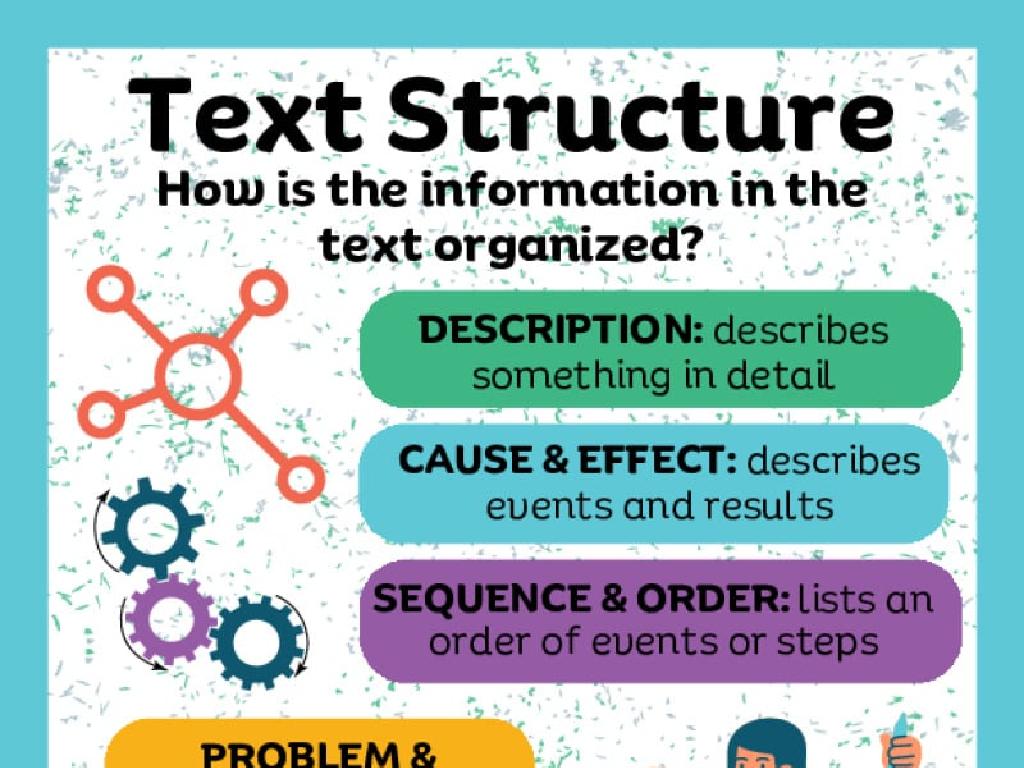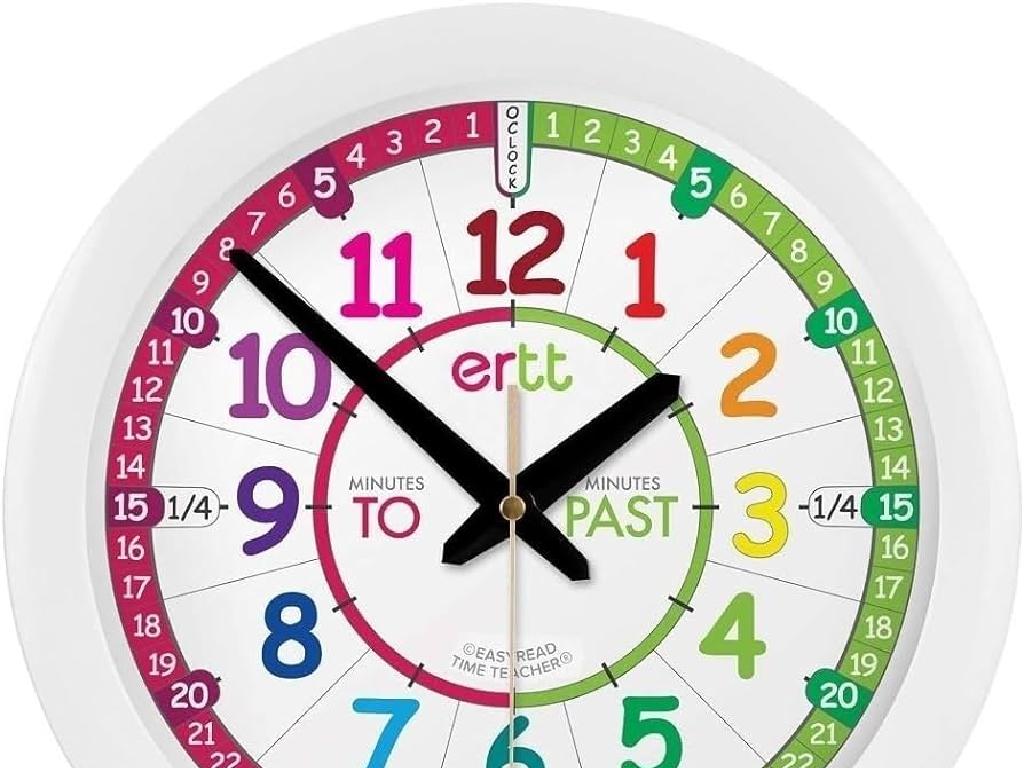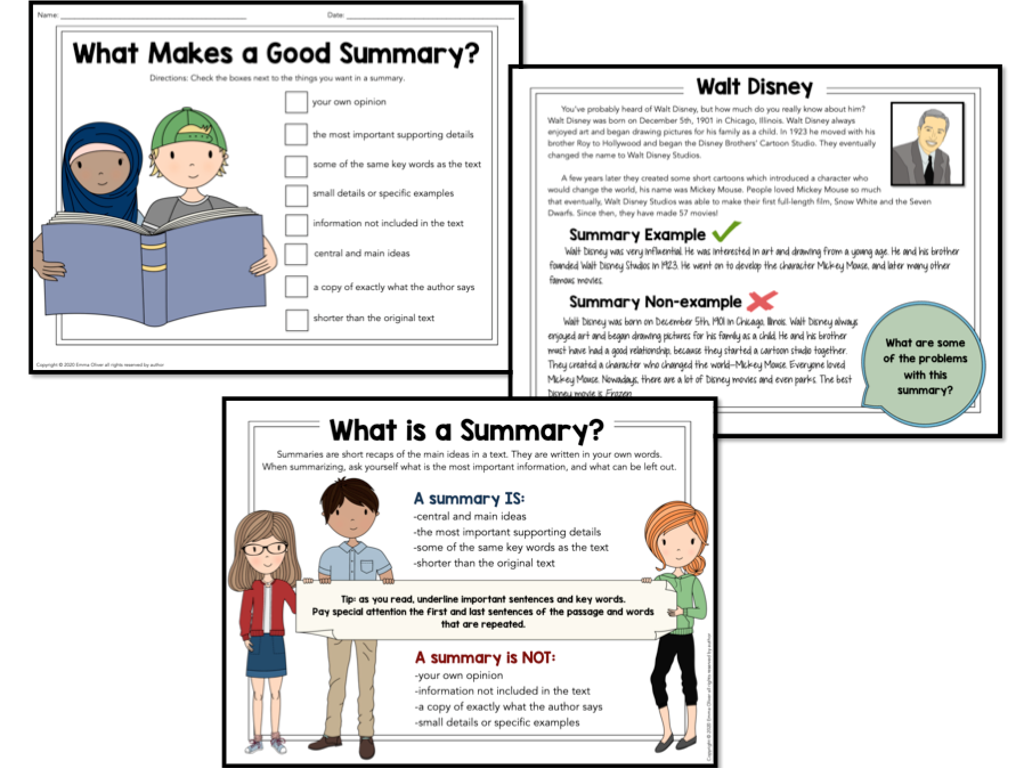Multiply Numbers Ending In Zeros
Subject: Math
Grade: Fifth grade
Topic: Multiplication
Please LOG IN to download the presentation. Access is available to registered users only.
View More Content
Multiplying Numbers Ending in Zeros
– Review basic multiplication
– Recall multiplication tables and methods
– Multiplication’s role in daily life
– Counting money, cooking, and shopping use multiplication
– Multiplying with zeros introduction
– Learn to multiply numbers like 50 x 4 or 200 x 3
– Simplifying multiplication with zeros
– Use shortcuts for multiplying numbers with zeros
|
Begin with a quick review of multiplication facts and methods to ensure students have a solid foundation. Discuss how multiplication is used in everyday scenarios such as managing finances, preparing recipes, or determining quantities needed for purchases, reinforcing its importance. Introduce the concept of multiplying numbers that end in one or more zeros, emphasizing that it’s an extension of basic multiplication skills. Teach students how to simplify these problems by initially ignoring the zeros and then adding them back to the product. Provide examples and practice problems to help students become comfortable with this technique. Encourage students to share any tricks or observations they might have about multiplying with zeros.
Multiplying Numbers Ending in Zeros
– Review single-digit multiplication
– Practice with single-digit numbers
– Observe patterns with zeros
– Multiplying by 10, 100, 1000 adds zeros to the product
– Understand zero multiplication
– Any number times zero equals zero
|
Begin with a quick review of single-digit multiplication to ensure students are comfortable with basic multiplication facts. Move on to practicing these skills with a series of single-digit multiplication problems. Next, guide students to observe the patterns that emerge when multiplying numbers by 10, 100, and 1000, noting how zeros are added to the end of the original number to form the product. Emphasize the concept that any number multiplied by zero results in zero. This understanding is crucial for mastering multiplication with larger numbers and prepares students for more complex problems. Provide examples and encourage students to come up with their own to solidify their understanding.
Multiplying Numbers Ending in Zeros
– Multiplying by 10, 100, 1000
– Each zero shifts the number one place to the left.
– Place value’s role in multiplication
– Place value determines the number’s position and value.
– Example: 4 x 10 = 40
– Adding one zero to the product.
– More examples: 5 x 100, 3 x 1000
– Adding two and three zeros respectively.
|
This slide introduces the concept of multiplying numbers by 10, 100, and 1000, emphasizing the pattern of zeros and how they affect the place value of a number. When we multiply by 10, 100, or 1000, we are essentially shifting the digits of the original number to the left by one, two, or three places, respectively. It’s crucial for students to understand that the place value system is the foundation of this process. Provide clear examples, such as 4 x 10, and explain that we add one zero to the original number (4) to get the product (40). Similarly, for 5 x 100 and 3 x 1000, we add two and three zeros to the original numbers to find the products. Encourage students to practice with additional examples and to observe the pattern of zeros in the products.
Multiplying Numbers Ending in Zeros
– Multiply without ending zeros
– Ignore zeros and multiply: 2 x 4, 3 x 7, 5 x 6
– Count total zeros in both numbers
– 20 has 1 zero, 300 has 2 zeros, 50 and 60 each have 1 zero
– Apply zeros to the product
– Add zeros back: 8 becomes 80, 21 becomes 2100, 30 becomes 3000
– Practice with examples
– Try 20 x 4, 300 x 7, 50 x 60 and check your answers
|
This slide introduces the concept of multiplying numbers that end in zeros. The strategy simplifies the process by initially ignoring the zeros and multiplying the remaining numbers. After finding the product, count the total number of zeros from both original numbers and append them to the product. This method helps students avoid confusion and makes multiplication easier. Provide examples and encourage students to practice this technique with different numbers. Ensure they understand the importance of keeping track of the zeros to accurately complete the multiplication.
Multiplying Numbers Ending in Zeros: Practice
– Work on practice problems together
– Explain your problem-solving steps
– ‘I multiplied the non-zero numbers first, then added the zeros at the end.’
– Discuss and correct common mistakes
– For example, mixing up place values or forgetting zeros.
– Clarify any misunderstandings
– ‘I thought 100 x 40 was 4000, but I missed a zero. It’s actually 4000.’
|
This slide is focused on interactive practice and reinforcing the concept of multiplication with numbers ending in zeros. Start by solving problems as a class, guiding students through the process and encouraging them to participate. Ask them to verbalize their thought process to identify and address any gaps in understanding. Pay attention to common errors, such as misplacing zeros or incorrect counting of zeros, and use these as teaching moments. Clarify any misconceptions immediately to ensure a solid understanding. Provide a variety of problems to practice and consider peer review to foster collaborative learning. The goal is to build confidence and accuracy in multiplying large numbers.
Class Activity: Zero Hero Multiplication
– Pair up and create zero-ending problems
– Swap problems with another pair
– Solve the swapped multiplication
– Discuss solutions and strategies
– Share different methods used for solving
|
This interactive class activity is designed to engage students with multiplication problems that involve numbers ending in zeros. Students will work in pairs to create their own problems, which encourages collaboration and creativity. After creating their problems, they will swap with another pair, adding an element of surprise and testing their ability to solve different types of problems. Once the problems are solved, the class will come together to discuss the solutions and the strategies used. This is a great opportunity for students to learn from each other and to understand different approaches to multiplication. As a teacher, facilitate the discussion by highlighting effective strategies and addressing any misconceptions. Provide guidance and support as needed, and ensure that each student is actively participating and engaged in the learning process.
Wrapping Up: Multiplication with Zeros
– Review key multiplication concepts
– Homework: Zero-ending multiplication worksheet
– Complete problems multiplying numbers that end in zeros
– Practice makes perfect
– The more you practice, the better you’ll understand
– Share any questions next class
– Bring up difficulties for discussion and help
|
As we conclude today’s lesson on multiplying numbers ending in zeros, remind students of the main strategies discussed. For homework, they are to complete a worksheet that includes various problems of this type to reinforce their understanding. Encourage regular practice to build confidence and mastery in this concept. Let them know that it’s okay to have questions and that they should bring any challenges they face to the next class for clarification. This will help ensure that all students are on the same page and feel supported in their learning journey.





